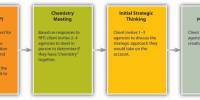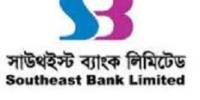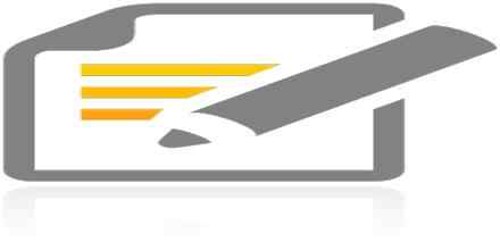Origin of the Report:
Knowledge and learning become perfect when it is associated with theory and practice. Theoretical knowledge gets its perfection with practical application. As our educational system predominantly text based, by studying real situation, students can train and prepare themselves for the job market. In today’s world, practical work is highly needed to gain idea, knowledge and experience from all over the world. DaffodilInternational University of Business and Economics, One of the reputed business schools in Bangladesh, has designed the curriculum of the BBA course such a way that the international standard graduates will be produced. For the partial fulfillment of BBA program our course teacher Mr.Shajidul Alam assigned us to prepare a Time-Series ratio analysis of a company to evaluate & interpret their financial performance. In this regard, we have selected Agricultural Marketing Company Ltd. PRAN as our client organization to evaluate their performance & financial status after doing a five years time-series ratio analysis from the firm’s financial statements.
Background of the Report:
Ratio analysis is the main task of this report. Therefore, this report includes various types of ratio measure and analysis. Financial ratio can be divided for convenience into five basic categories.
Liquidity ratio
Activity ratio
Debt ratio
Profitability ratio
Objective of the Report
Specific Objective of the Report:
As we are preparing this report assigned by the finance faculty of our university, our specific objectives are-
To fulfill the partial of BBA program.
To gain knowledge about ratio analysis.
To observe the components that affects the ratio analysis.
To know the tactic to develop a ratio analysis.
To prepare ourselves as eligible worker to enter into a competitive job market.
Methodology:
We have initiated our analysis through gathering of information. We have collected information from primary as well as secondary sources.
Primary sources: The primary sources of information includes interviews with the firm’s financial personnel. Besides we have interviewed the accountants to get assistance for using the secondary data that is the firm’s financial statements.
Secondary sources: The secondary sources of information includes the firm’s annual report of the previous five years (2001-2005) & company profile. We have also collected information from the Internet & newspaper. Various books and reports related to ratio analysis have also been used as secondary sources of information.
Analysis of data & information: Analysis of the financial performance of Agricultural Marketing Company Ltd. of PRAN group has been evaluated from the data with the different financial ratios and formulas covered in the classroom session.
Ratio Analysis:
Ratio analysis involves methods of calculating and interpreting financial ratios to assess the firm’s performance & status. The basic inputs to ratio analysis are the firm’s income statement and balance sheet.
Types of Ratio Comparisons:
Ratio analysis is not merely the application of a formula to financial data to calculate a given ratio. More important is the interpretation of the ratio value. To answer such questions as, Is it too high or too low? Is it good or bad?, a meaningful basis for comparisons is needed. Two types of ratio comparisons can be made: Cross-sectional & Time-series analysis.
1.Cross Sectional Analysis:
Cross-sectional analysis involves the comparison of different firm’s financial ratios at the same point in time. The typical business is interested in how well it has performed in relation to other firms in its industry. Often, the reported financial statements of competing firms will be available for analysis. Frequently, a firm will compare its ratio values to those of a key competitor or group of competitors that it wishes to emulate. This type of cross-sectional analysis, called benchmarking, has become very popular. By comparing the firm’s ratios to those of the benchmark company or companies, it can identify areas in which it excels and, more importantly, areas for improvement.
2. Time-Series Analysis:
Time-series analysis evaluates performance over time. Comparison of current to past performance, using ratios, allows the firm to determine whether it is progressing as planned. Developing trends can be seen by using multiyear comparisons, and knowledge of these trends can assist the firm in planning future operations. As in cross-sectional analysis, any significant year-to-year changes should be evaluated to assess whether they are symptomatic of major problem. Additionally, time-series analysis is often helpful in checking the reasonableness of a firm’s projected financial statements. A comparison of current and past ratios to those resulting from an analysis of projected statements may reveal discrepancies or over optimism.
- Combined Analysis
The most informative approach to ratio analysis is one that combines cross-sectional and time-series analysis. A combined view permits assessment of the trend in the behavior of the ratio in relation to the trend for the industry.
Cautions about Ratio Analysis:
Before discussing specific ratios, we should consider the following cautions:
A single ratio does not generally provide sufficient information from which to judge the overall performance of the firm.
Be sure that the dates of the financial statements being compared are the same.
It is preferable to use audited financial statements for ratio analysis.
Be certain that the data being compared have all been developed in the same way.
Groups of Financial Ratios:
Financial ratios can be divided into four basic groups or categories:
1. Liquidity ratios
2. Activity ratios
3. Debt ratios &
4. Profitability ratios
Liquidity, activity, and debt ratios primarily measure risk; profitability ratios measure return. In the near term, the important categories are liquidity, activity, and profitability, because these provide the information that is critical to the short-run operation of the firm. Debt ratios are useful primarily when the analyst is sure that the firm will successfully weather the short run.
Analyzing Liquidity:
The liquidity of a business firm is measured by its ability to satisfy its short-term obligations as they come due. Liquidity refers to the solvency of the firm’s overall financial position. The three basic measures of liquidity are-
Net Working Capital:Net Working Capital, although not actually a ratio, is a common measure of a firm’s overall liquidity.A measure of liquidity calculated by subtracting total current liabilities from total current assets.
Net Working Capital = Total Current Assets- Total Current Liabilities.
Current Ratio: One of the most general and frequently used of these liquidity ratios is the current ratio. Organizations use current ratio to measure the firm’s ability to meet short-term obligations.Current assets divided by current liabilities. It shows a firm’s ability to cover its current liabilities with its current assets.
Current Ratio = Current Assets / Current Liabilities
Quick Ratio/Acid Test:A measure of liquidity calculated by divining the firm’s current assets minus inventory by current liabilities. The quick ratio provides a greater measure of overall liquidity only when a firm’s inventory can’t be easily converted into cash.
Quick Ratio/ Acid Test = (Current Assets – Inventory) / Current Liabilities
Analyzing Activity:
Activity ratios measure the speed with which accounts are converted into sale or cash. With regard to current accounts measures of liquidity are generally inadequate because differences in the composition of a firm’s current accounts can significantly affects its true liquidity.
A number of ratios are available for measuring the activity of the most important current accounts which includes inventory, accounts receivable, and account payable. The activity (efficiency of utilization) of total assets can also be assessed.
Inventory Turnover:Inventory turnover commonly measures the activity, or liquidity, of a firm’s inventory. It is calculated as follows:
Inventory Turnover = Cost of Goods Sold / Inventory
Average Collection Period:Average collection period is useful in evaluating credit and collection policies. It is arrived at by dividing the average daily sales into the accounts receivable balance:
Average Collection Period = Accounts Receivable/Average Sales per Day.
= Accounts Receivable/ (Annual Sales/360)
2.6.3. Average Payment Period:The Average Payment period is calculated in the same manner as the average collection period:Average Payment Period = Accounts Payable/Average Purchases Per Day.
= Accounts payable / (annual purchases /360)
Fixed Assets Turnover:The fixed asset turnover measures the efficiency with which the firm has been using its fixed assets to generate sales.Fixed Asset Turnover = Sales / Net Fixed Assets
Total Asset Turnover:The total asset turnover indicates the efficiency with which the firm is able to use all its assets to generate sales.Total Asset Turnover = Sales/Total Assets
Analyzing Debt:
The debt position of the firm indicates the amount of other people’s money being used in attempting to generate profits. In general, the more debt a firm uses in relation to its total assets, the greater its financial leverage, a term used to describe the magnification of risk and return introduced through the use of fixed-cost financing such as debt and preferred stock.
Debt Ratio:The debt ratio measures the proportion of total assets provided by the firm’s creditors.
Debt Ratio = Total Liabilities / Total Assets
Debt-Equity Ratio:The debt-equity ratio indicates the relationship between the long-term funds provided by creditors and those provided by the firm’s owners.
Debt-Equity Ratio = Long-Term Debt/Stockholder’s Equity
Time Interest Earned Ratio:The Time interest Earned Ratio measures the ability to meet contractual interest payments.
Time interest Earned Ratio = EBIT / Interest
Fixed-Payment Coverage Ratio:The Fixed-Payment Coverage ratio measures the ability to meet all fixed-payment obligations.
Fixed-Payment Coverage Ratio = EBIT / Interest + {(Principal Payments + Preferred Stock Dividend) X [1/ (1-T)}
Analyzing Profitability:There are many measures of profitability. As a group, these measure evaluate the firm’s earnings with respect to a given level of sales, a certain level of assets, the owners’ investment, or share value. Without profits, a firm could not attract outside capital. Moreover, present owners and creditors would become concerned about the company’s future and attempt to recover their funds. Owners, creditors, and management pay close attention to boosting profits due to the great importance placed on earnings in the marketplace.
Gross Profit Margin:
The gross profit margin indicates the percentage of each sales dollar remaining after the firm has paid for its goods. The higher the gross profit margin the better, and the lower the relative cost of merchandise sold. The gross profit margin is calculated as follows:Gross Profit Margin = (Sale-Cost of Goods Sold)/Sales
= Gross Profits / Sales.
Operating Profit Margin: The Operating Profit margin represents what are often called the pure profits earned on each sales dollar. A higher operating profit margin is preferred. The operating profit margin is calculated as follows:
Operating Profit Margin = Operating Profit / Sales
Net Profit Margin:
The net profit margin measures the percentage of each sales dollar remaining after all expenses, including taxes, have deducted. The higher the firm’s net profit margin is better. The net profit margin is a commonly cited measure of the corporation’s success with respect to earnings on sales. The operating profit margin is calculated as follows:
Net Profit Margin = Net Profit after Taxes / Sales
Return on Investment (ROI):
The Return on investment (ROI), which is often called the firm’s return on total assets, measures the overall effectiveness of management in generating profits with its available assets. The higher the ratio, the better.
Return on Investment (ROI) = Net Profit after Taxes / Total Assets
Return on Equity (ROE):
The Return of Equity (ROE) measures the return earned on the owner’s (both preferred and common stockholders’) investment. Generally, the higher this return, the better off the owner’s.
Return on Equity (ROE) = Net Profit after Taxes /Stockholders’ Equity
Earning Per Share (EPS):
The firm’s Earning per share (EPS) are generally of interest to present or prospective stockholders and management. The Earning per share represent the number of dollars earned on behalf of each outstanding share of common stock. The Earnings per share is calculated as follows:
Earning Per Share = Earnings Attributable to the Ordinary Shareholder /
Weighted Average Number of Ordinary Shares Outstanding During the Years
Price or Earning Ratio (P/E):The Price or Earning (P/E) ratio is commonly used to assess the owner’s appraisal of share value. The P/E represents the amount investors are willing to pay for each dollar of the firm’s earnings. The higher the P/E ratio, the greater investor confidence in the firm’s future. The Price or Earning (P/E) ratio is calculated as follows:
Price or Earning (P/E) = Market Price per Share of Common Stock / EPS3.1. About the Company
Company Pro fail:
PRAN GROUP was born in 1980. Keeping in view the corporate mission of the group we have over the years diversified our activities. Today we are the largest processors of fruits & vegetables in Bangladesh. We encourage contract farmers and help them grow quality crops with increased yields and to obtain fair prices. The Group comprises of 10 companies. The head offices are located at Dhaka with production facilities around the country. Our management is modern adapted to our environment & culture. Our largest asset is our competent team of hands-on-mangers & dedicated employees.
PRAN stands for
Programme for Rural Advancement Nationally.
In Bangla “Progoti Rupayone Agrani Noboddom”.
Group Mission:
Poverty and hunger are curses.
Company Aim:
To generate employment and dignity and self-respect for our compatriots through profitable enterprises.
Consumer Benefit:
International quality Products
Competitive price
Wide rage of products that meet the requirement of the consumers of all ages & groups
Quality Certification:
Agricultural Marketing Co Ltd- PRAN is the first food processing company in Bangladesh to achieve the prestigious distinction ISO 9001certification for their quality management system. This supreme certification ensures that PRAN Products reach the consumers table maintaining the highest level of quality. I addition to ISO, PRAN has got international certifications like HALAL & HACCP« High quality and safe food products at affordable prices, endorsed by the ISO Seal of Guarantee.
Strong and well differentiated brands with leading market shares.
Strong equity with consumers as a Company with “high quality” brands.
Ongoing Product innovation and renovation, to convert consumer insights.
Well diversified product portfolio. Efficient supply chain.
Distribution structure that allows wide reach and coverage in the target markets.
Capable and committed human resources.
Weaknesses:
Exports of goods to foreign countries, constitutes substantial part of overall exports.
Complex supply chain configuration.
Opportunities:
We in Bangladesh are blessed with a climate ideally suited to agriculture, specially fruits and vegetables-rich in taste and flavor, sweet, mellow and juicy.
Potential for expansion in the smaller towns and other geographies.
Potential for growth through increased penetration.
Growing trend for ‘Out of Home’ consumption.
Health and Wellness.
Threats:
Competitive environment with diverse players.
Rising prices of raw materials and fuels.
Change in fiscal benefits/ laws.
Performance Evaluation:
While doing the performance evaluation scholars prefer to work with relative data return than absolute one. Relative data normalize each balance relative to its relevant variable. Thus, it gives better insight about the change incurred in the entity.
Analysis must in corporate both of them together to find in the changes in variable relative to its relevant variable and the changes overtime. Thus, we turned our analysis to ratio analysis that automatically incorporates both the necessary features for better inside and prediction.
Ratio Analysis:
To evaluate a firm’s financial condition and performance, the financial analyst needs to perform “Checkups” on various aspects of a firm’s financial health. A tool frequently used during these checkups is a financial ratio, or index, which relates two pieces of financial data by dividing one quantity by the other.
So, it gives better insight understanding the performance of any enterprise. Analysts undoubtedly prefer it due to its dual opportunities of cross-sectional and time-serious analysis.
Analyzing Liquidity:
The liquidity of a business firm is measured by its ability to satisfy its short-term obligations as they come due. Liquidity refers to the solvency of the firm’s overall financial position. The three basic measures of liquidity are-
Current Ratio:
One of the most general and frequently used of these liquidity ratios is the current ratio. Organizations use current ratio to measure the firm’s ability to meet short-term obligations.Current assets divided by current liabilities. It shows a firm’s ability to cover its current liabilities with its current assets.
Current Ratio = Current Assets / Current Liabilities
| Year | Current Asset | Current Liability | Current Ratio |
| 2001 | 445,812,934 | 334,673,215 | 1.3321 |
| 2002 | 509,202,025 | 391,729,576 | 1.2999 |
| 2003 | 580,472,010 | 464,013,742 | 1.2510 |
| 2004 | 622,251,889 | 503,199,292 | 1.2366 |
| 2005 | 660,584,792 | 499,627,981 | 1.3222 |
Graphical Presentation
Interpretation:
The company’s current ratio deviates between 1.2-13 form the preceding 5 years. As a manufacturing company, current ratio 2 is generally acceptable. So, according to our evaluation the company’s current ratio is poor. It should be increase to minimum standard to increase the liquidity.
Quick Ratio/Acid Test:A measure of liquidity calculated by divining the firm’s current assets minus inventory by current liabilities. The quick ratio provides a greater measure of overall liquidity only when a firm’s inventory can’t be easily converted into cash. Quick Ratio/ Acid Test = (Current assets – Inventory) / Current liabilities
| Year | Current asset | Inventory | Current liability | Current Ratio |
| 2001 | 445,812,934 | 328,013,450 | 334,673,215 | 0.3520 |
| 2002 | 509,202,025 | 357,347,834 | 391,729,576 | 0.3877 |
| 2003 | 580,472,010 | 456,605,572 | 464,013,742 | 0.2669 |
| 2004 | 622,251,889 | 493,278,897 | 503,199,292 | 0.2563 |
| 2005 | 660,584,792 | 491,608,049 | 499,627,981 | 0.3382 |
Graphical Presentation
Interpretation:
A quick ratio of 1.0 or greater is occasionally recommended, but as with the current ratio, an acceptable value depends largely on the industry. PRAN company has quick ratio from 0.25 to 0.35 between the years 2001-2005. So, the quick ratio of the firm is very poor as it deviates too much it is also risky for the company. It should be increased to the minimum standard of ≥1.
Analyzing Activity:Activity ratios measure the speed with which accounts are converted into sale or cash.
Inventory Turnover:Inventory turnover commonly measures the activity, or liquidity, of a firm’s inventory. It is calculated as follows:
Inventory Turnover = Cost of Goods Sold / Inventory
| Year | Cost of Goods Sold | Inventory | Inventory Turnover |
| 2001 | 469,635,179 | 328,013,450 | 1.4318 |
| 2002 | 534,235,557 | 357,347,834 | 1.4950 |
| 2003 | 556,668,499 | 456,605,572 | 1.2191 |
| 2004 | 574,352,080 | 493,278,897 | 1.1644 |
| 2005 | 592,870,264 | 491,608,049 | 1.2060 |
Graphical Presentation
Interpretation:
The firm’s inventory turnover ratio deviates between 1.16 -1.49 in the preceding 5 years (2001-2005). As we know, as greater the inventory turnover ratio it is more efficient. So, the company’s turnover ratio is not so efficient.
Total Asset Turnover:
The total asset turnover indicates the efficiency with which the firm is able to use all its assets to generate sales.
Total Asset Turnover = Sales/Total Assets
| Year | Sales | Total Assets | Total Asset Turnover Ratio |
| 2001 | 640,747,605 | 691,098,642 | 0.9271 |
| 2002 | 716,883,310 | 813,749,612 | 0.8810 |
| 2003 | 752,710,227 | 943,907,412 | 0.7974 |
| 2004 | 775,131,774 | 968,368,328 | 0.8005 |
| 2005 | 797,683,342 | 995,607,438 | 0.8012 |
Graphical Presentation
Interpretation:
The company’s total asset turnover ratio fluctuates from 0.79-0. 92. The more it is greater it is more efficient. So, the PRAN’s total asset turnover is poor. PRAN should take steps to increase the efficiency of using total assets to generate sales.
Time Interest Earned Ratio:The Time interest Earned Ratio measures the ability to meet contractual interest payments.
Time Interest Earned Ratio = EBIT (Operating Profit) / Interest
| Year | Operating Profit | Interest | Time Interest Earned Ratio |
| 2001 | 91,757,355 | 46,509,258 | 1.9729 |
| 2002 | 101,022,997 | 54,684,458 | 1.8474 |
| 2003 | 114,993,281 | 66,669,159 | 1.7248 |
| 2004 | 199,423,165 | 75,877,115 | 2.6282 |
| 2005 | 122,327,538 | 77,849,440 | 1.5713 |
Graphical Presentation
Interpretation:
The company’s time interest earned ratio fluctuates from 1.57-2.62. As we know, if this ratio is less than 1 the firm will be not able to meet up the contractual interest payment. Therefore, the company is able to meet up the interest payment successfully in the preceding 5 years (2001-2005).
Fixed-Payment Coverage Ratio:The Fixed-Payment Coverage ratio measures the ability to meet all fixed-payment obligations.
Fixed-Payment Coverage ratio = EBIT / Interest + {(principal payments +
Preferred Stock Dividend) X [1/ (1-T)}
Interpretation:Due to the unavailability of the needed information, we were not able to cover this ratio.
Analyzing Profitability:
Gross Profit margin:
The gross profit margin indicates the percentage of each sales dollar remaining after the firm has paid for its goods. The higher the gross profit margin the better, and the lower the relative cost of merchandise sold. The gross profit margin is calculated as follows:
Gross Profit Margin = (Sale-Cost of Goods Sold)/Sales
= Gross Profits / Sales.
| Year | Gross Profit | Sales | Gross Profit Margin |
| 2001 | 171,112,426 | 640,747,605 | 0.2671 |
| 2002 | 182,647,753 | 716,883,310 | 0.2548 |
| 2003 | 196,041,728 | 752,710,227 | 0.2604 |
| 2004 | 200,779,694 | 775,131,774 | 0.2590 |
| 2005 | 204,813,078 | 797,683,342 | 0.2568 |
Graphical Presentation
Interpretation:
The firm’s gross profit margin fluctuates from 25.48% to 26.71% in the preceding 5 years (2001-2005). More the ratio is the more the company’s profitability. The gross profit margin has a decreasing trend, which is not desirable. So, the company should try to increase the gross profit margin.
Net Profit Margin:
The net profit margin measures the percentage of each sales dollar remaining after all expenses, including taxes, have deducted. The higher the firm’s net profit margin is better. The net profit margin is a commonly cited measure of the corporation’s success with respect to earnings on sales. The operating profit margin is calculated as follows:
Net Profit Margin = Net Profit after Taxes / Sales
| Year | Net Profit after Taxes | Sales | Net Profit Margin |
| 2001 | 41,935,472 | 640,747,605 | 0.0654 |
| 2002 | 43,410,767 | 716,883,310 | 0.0606 |
| 2003 | 44,386,931 | 752,710,227 | 0.0590 |
| 2004 | 40,309,136 | 775,131,774 | 0.0520 |
| 2005 | 40,771,757 | 797,683,342 | 0.0511 |
Graphical Presentation
Interpretation:
The firm’s net profit margin fluctuates from 5.11% to 6.59% in the preceding 5 years (2001-2005). PRAN has a decreasing net profit margin, which is undesirable. Therefore, it should be recovered to sustain profitability.
Return on Investment (ROI):The Return on investment (ROI), which is often called the firm’s return on total assets, measures the overall effectiveness of management in generating profits with its available assets. The higher the ratio, the better.
Return on Investment (ROI) = Net Profit after Taxes / Total Assets
| Year | Net Profit after Taxes | Total Assets | Return on Investment |
| 2001 | 41,935,472 | 691,098,642 | 0.0607 |
| 2002 | 43,410,767 | 813,749,612 | 0.0533 |
| 2003 | 44,386,931 | 943,907,412 | 0.0470 |
| 2004 | 40,309,136 | 968,368,328 | 0.0416 |
| 2005 | 40,771,757 | 995,607,438 | 0.0410 |
Graphical Presentation
Interpretation:
The firm’s return on investment deviates from 4.10% to 6.07% in the preceding 5 years (2001-2005). PRAN’s return on investment has a decreasing trend which is not desirable. So, the management should work hard to increase the return associated with investment.
Conclusion:
Agricultural Marketing Co Ltd (AMCL)- PRAN is the first food processing company in Bangladesh to achieve the prestigious distinction ISO 9001certification for their quality management system. This supreme certification ensures that PRAN Products reach the consumers table maintaining the highest level of quality. I addition to ISO, PRAN has got international certifications like HALAL & HACCP. However, AMCL is not more profitable in the preceding years but it is a growing company. It’s performance is fair in respect of the Industry. But to become more profitable and effective utilization of its resources AMCL need to improve its present condition. We suggest some suggestion as we think that fit the company to improve the overall performance.
Effective utilization of the company’s resources should be conformed.
The company should take more profitable projects to increase it’s profitability.
As an agricultural company, training programs should be provided and implemented in the all levels of the organizations including the farmers.
Optimal capital structure should be conformed to sustain profitability.
New policies should be introduced for effective and efficient control of the resources.
All the departments should act together for achieving the company objectives.
















